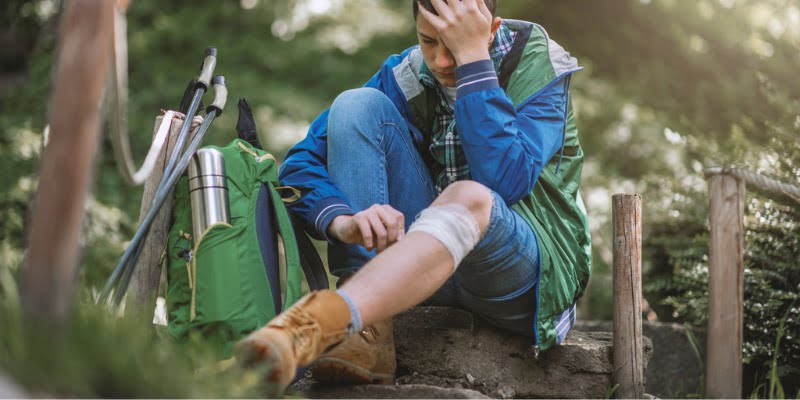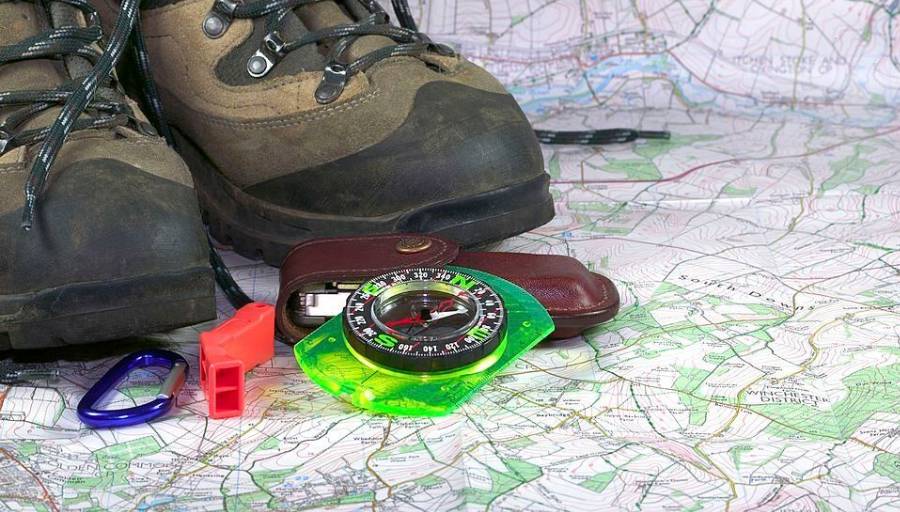Pain While Hiking: Here are Tips on How to Prevent

Aches and pains while hiking or camping are common, especially during or after a day on the trails. Who hasn’t felt a sore knee on the descent or intense muscle fatigue after a solid day of hiking? Leg pain often follows the day after a challenging walk. While everyone experiences this discomfort to varying degrees, there are ways to minimize or even prevent pain while hiking. The right equipment and good physical preparation are key in reducing pain, letting you focus on enjoying the journey rather than enduring the aches.
Manage Fatigue and Muscle Pain While Hiking
To manage fatigue and muscle pain when hiking, you must follow these tips…
Important Equipment to Avoid Pain in the Legs
Just as a skilled worker needs the right tools, a hiker benefits from quality gear. Having good equipment not only boosts efficiency and comfort but also helps protect against the inevitable pain that can come with long treks.
Good shoes for walking
Choose the right shoes suitable for hiking, especially in difficult terrain. It is also essential to go on the trails with quality hiking shoes, not sneakers or other unsuitable shoes. Take the time to analyze the cushioning of your pair, flexibility, and resistance. Make sure to learn the main criteria for choosing good hiking boots and equip yourself with a model that will last for years.
Adequate socks
The role of socks in preventing leg and foot fatigue is often underestimated. Yet, they are essential for comfort and support across varying terrains. As the closest layer to your feet, socks are responsible for all points of contact during a hike, making them a crucial part of your gear for minimizing fatigue and discomfort. Hiking socks can be important after and during exercise:
- During exercise, socks play a crucial role in protecting your feet, reducing the risk of overheating and blisters. They also offer valuable support, helping to limit unwanted movements and thus prevent numerous small injuries.
- After exercise, compression socks are ideal for promoting recovery and reducing the heavy-leg feeling that often follows extended physical activity. On multi-day hikes, wearing compression socks for about an hour each evening can significantly improve how your legs feel for the next day’s journey.
Manage Fatigue by Moving at Your Own Pace
The saying, “There’s no point in rushing; start at the right time,” highlights a fundamental hiking principle: walk at your own pace. Beginning with a pace that’s too fast quickly leads to fatigue. Finding a rhythm that allows you to breathe easily—even while talking—will help you conserve energy and make the hike more enjoyable.
It’s best to choose a slower pace, enabling you to walk longer and avoid frequent breaks that can cool your muscles. This approach is also wise for group hikes—there’s no need to match the fastest hiker. Let them go ahead; by maintaining your own pace, you’ll likely catch up in time.
Walk with Trekking/Hiking Poles
Although hiking sticks aren’t a cure-all, using them correctly can enhance your safety and stability on the trails. Trekking poles are invaluable for those who hike regularly. They provide essential support that helps correct foot positioning errors. Furthermore, they are crucial for reducing knee pain during downhill hikes. They offer you support that compensates for the efforts of this joint and protects it from tendonitis and other inflammations that can create chronic pain.
Adequate Physical Preparation to Avoid Fatigue and Muscle Pain
Like any sport, hiking demands a certain level of training and physical preparation. Just because it seems like walking doesn’t mean you can skip warming up and stretching. To manage fatigue effectively on multi-day hikes, you need discipline and a commitment to maintaining good overall health.
Train Gradually to be in Good Physical Condition
Many injuries stem from the urge to do too much—whether it’s hiking too long, tackling overly difficult trails, or going out too frequently. It’s essential to progress in your hiking practice gradually and with care.
Before attempting 40 km hikes on uneven terrain, build up your endurance with shorter distances of 10, 20, and 30 km. This gradual progression prepares your muscles and joints for the demands of prolonged effort. Additionally, if you take a break from hiking for two months or more, follow it with a reintroduction phase that gradually increases in intensity, depending on your previous experience.
Warm Up to Avoid Muscle Injuries While Hiking
An adequate warm-up should precede your walk. It is unthinkable to embark on steep paths without overheating your engine! Even in the event of a fairly easy hike without technical difficulties, take the time to warm up at least a quarter of an hour before setting off. They are essential for providing flexibility and support, especially at the end of the day when the risk of injury tends to increase.
Stay Hydrated Against Fatigue and Muscle Pain
To combat fatigue and muscle pain, it’s crucial to drink water regularly and not wait until you’re thirsty. As you walk, your body loses water, so staying hydrated is essential for maintaining your energy and minimizing strain on your body. Proper hydration can also help prevent soreness in your muscles later, allowing you to enjoy your hike to the fullest.
Eat well
Diet plays a vital role in managing fatigue during hikes. Before heading out, focus on a nutritious breakfast that includes quick-release sugars and starchy foods to fuel your energy reserves. While on the trail, snack on light foods and energy bars to keep your energy levels up. After completing your hike, aim to eat starchy foods within an hour to replenish your glycogen stores, which is the reserve form of glucose. Combining vitamins, healthy fats, and proteins into your post-hike meal will further support your recovery and overall energy levels.
Walk without bothering yourself
To combat fatigue and muscle aches, avoid overloading your pack. No need to carry excessive food and unnecessary items. Instead, pack only what you truly need and make sure to wear your backpack properly. This approach will keep your back and legs from becoming strained.
Manage Fatigue and Muscle Pain After a Hike
Now you’re going to learn effective strategies for managing fatigue and muscle pain after a hike. These tips will help you recover quickly and get back on the trails feeling refreshed.
Keep Moving to Recover
After long hours of hiking, the temptation to sit down immediately can be strong, but it’s important to resist. To effectively manage your fatigue, focus on staying active during your recovery. Remove your backpack and take a gentle, flat walk for about ten minutes. This light movement helps circulate blood and relaxes your muscles.
Stretching After the Hike
Stretching after a hike is crucial for preventing soreness in the evening or the following morning. It gently works your tendons through extension, avoiding any shocks or jerks that could cause further strain. Furthermore, stretching helps alleviate the feeling of heavy or sore legs. By flushing out toxins from your muscles and maintaining proper hydration after your hike, you can make your legs feel lighter and significantly reduce post-hike discomfort.
Make Massages
Whether alone or with a partner, a gentle massage can be incredibly beneficial after a long hike. Massaging your legs helps promote the elimination of toxins from your muscles and reduces the risk of tendonitis. However, it’s important to use soft, gentle movements without applying too much pressure. A moment of recovery should be enjoyable, not painful, so take your time to relax and let the massage aid in your recovery.
Take a Cold Water Bath
Immersing yourself in water at 10 to 15 °C for ten minutes can greatly benefit sore muscles by helping to restore their tone. For those who prefer a more cautious approach, a warm shower with the water stream directed at your legs can also provide relief.
Get a Good Night’s Sleep
After a long day of hiking, there’s nothing like a good night’s sleep to aid recovery. Aim to go to bed early, and try to avoid screens—like the TV or your phone—at least 45 minutes before sleep. Resist the urge to scroll through social media while lying in bed. If you’re hiking for multiple days, ensure your nightly rest exceeds the duration of your planned hike the following day. A minimum of 7 hours of sleep is recommended to help your body recover and prepare for the next adventure.
Train Yourself
Your completed hike isn’t just an endpoint; it’s part of a larger journey. Regular practice and proper fatigue management will help your body adapt to these efforts, allowing you to acclimatize better for future hikes. Most importantly, remember that hiking is meant to be enjoyable. Embrace the experience, take in the scenery, and don’t dwell on fatigue—focus on the fun and adventure that awaits on the trails!
Have any questions? Ask in the comment section below. I will answer as soon as possible.
Read Also…






